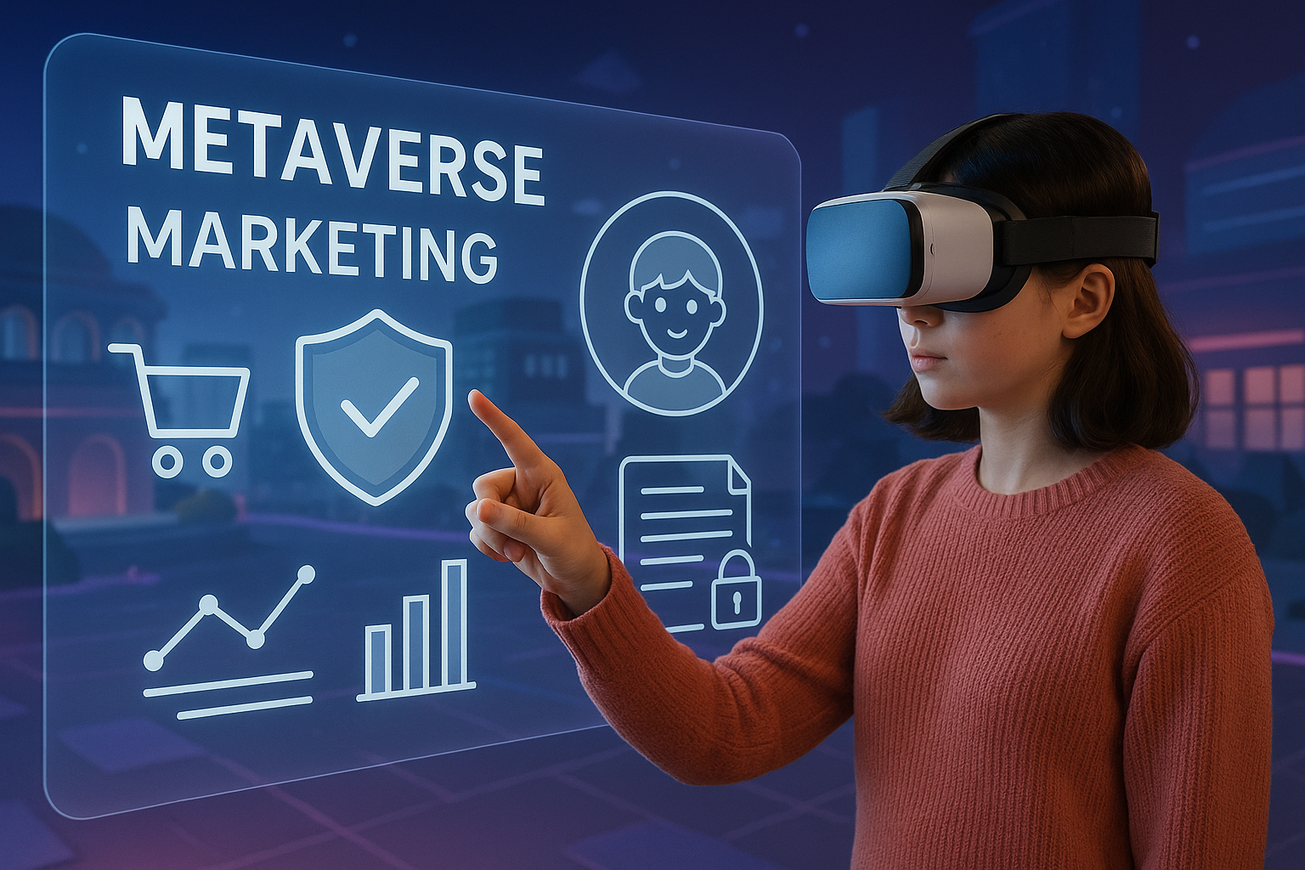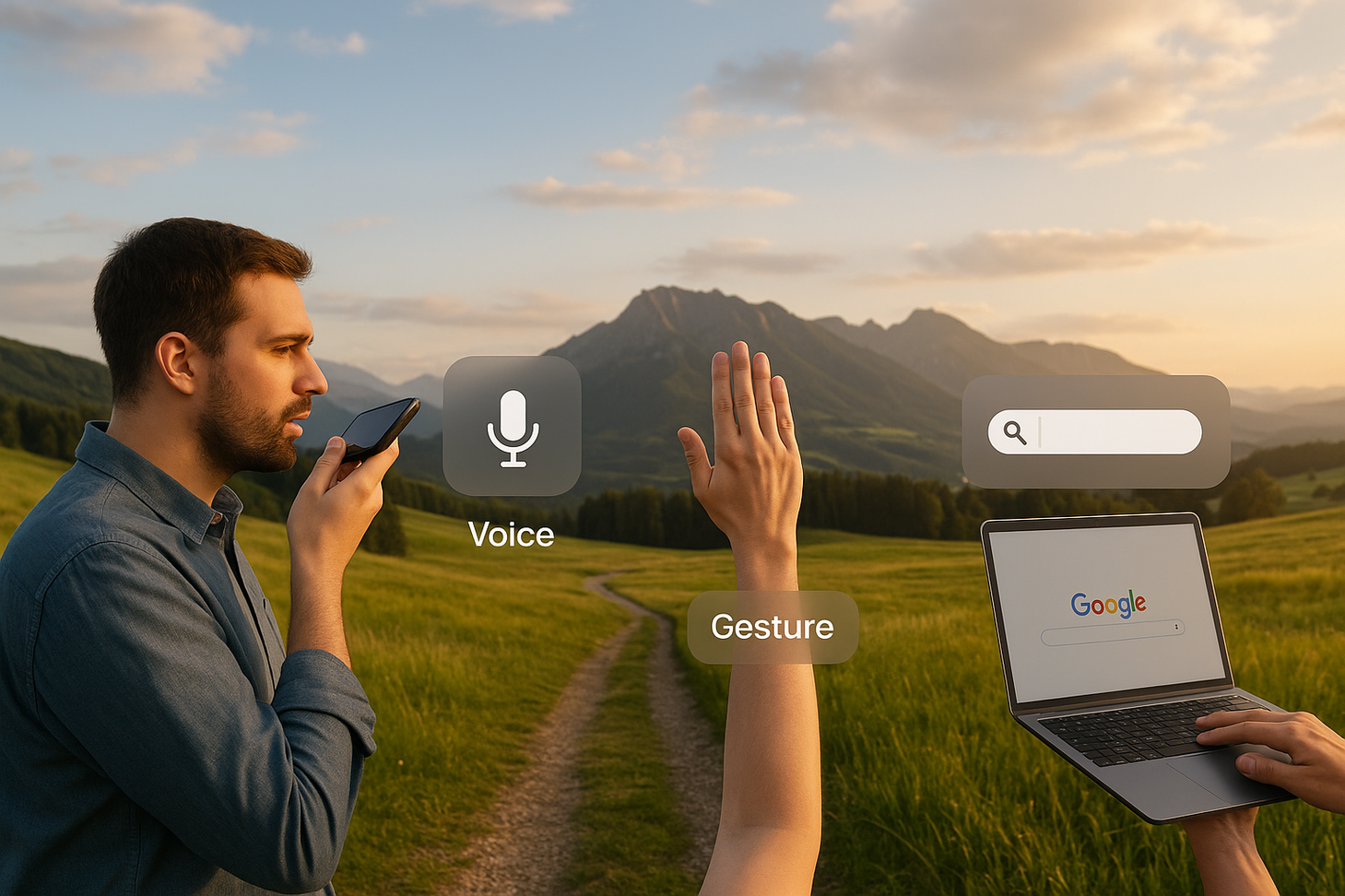Brand deals have changed over time. A few years ago, putting a famous person’s face on a product was enough to make a difference. In the present day, unless they are moved, individuals hardly notice sponsored posts. The game is now different. Largely. Now picture yourself going through your page when, all of a sudden, your favourite creative appears in a holographic form, speaking to you rather than simply at you. They are in your area (kind of), moving around and demonstrating a product as if they were physically there. Odd? A little. Awesome? Indeed. And it feels… different, which is why it works. Novel. Individual. This is the new frontier of brand ambassadorship, where influencers aren’t just content creators, but digital storytellers coming to life in 3D. Not just on your screen, but in your environment. We’re talking about holographic marketing, where real-time influence meets tech wizardry. The problem is that technology alone does not tell the whole story. The people are the ones with the true power. Because the human touch is what makes it work, regardless of how elaborate the graphics grow. When brand ambassadors, influencers, and artists are combined with immersive storytelling, something clicks. We trust individuals who seem genuine. Brand messaging no longer feels like advertisements. They have the sensation of dialogue, and that type of interaction is priceless in a society where people compete for every available moment of attention.
Understanding Modern Brand Ambassador Dynamics
The Evolution of Brand Ambassador Programs
Let’s go back a moment. When a brand ambassador essentially meant being well-known and posing with a product, do you recall that? That’s all. Everyone walked on after a little shoutout and perhaps a corny picture op. But let’s face it, modern customers are far too astute for that. They want to hear from someone who genuinely uses the product, not just another well-made advertisement. Someone with whom they can identify, a genuine person. Programs for brand ambassadors have totally changed in the last few years. Now, it’s more important to identify the appropriate individuals than to showcase huge names. People who live, breathe, and discuss it like they would with a buddy, rather than merely pushing products. Because of this, businesses are contacting niche producers and micro-influencers rather than celebrities. Deeper trust and more cohesive societies are common among these smaller voices. Because it sounds more like a recommendation from someone who understands them than a pitch, their followers pay attention. And that change? It’s not just wise, it’s essential.
Key Components of Successful Ambassador Programs
You can’t just throw spaghetti against the wall and hope it sticks by putting together a list of influencers and calling it a brand ambassador program. Structure has a real influence. You must be clear about your goals. Are you attempting to establish your reputation? Create a devoted following? Increase sales? Everything mentioned above? If you don’t start with the “why, ” things will quickly become chaotic. However, rigidity is not the same as structure. The finest programs allow for flexibility for creators. Allow them to express themselves in their own unique manner, even though you do want them to adhere to the brand’s tone. A forced post may be easily identified by viewers. Where the magic happens is when creators are allowed to do what they do, with a few wise guidelines. And let’s not even discuss pay. Cutting a check and calling it a day is no longer enough. People desire to feel valued. This might entail unique benefits, commissions on sales, early access to merchandise, or simply knowing they’re part of something important. Ambassadors remain loyal when they are treated as partners rather than as mouthpieces. Additionally, their audience clicks more quickly, listens longer, and has greater trust when they stay on the site.
Holographic Marketing: The Next Frontier
Understanding Holographic Technology in Marketing
Holographic marketing is a cutting-edge method of brand storytelling that provides customers with three-dimensional, immersive experiences. With the use of this technology, marketers can now communicate their ideas and products in previously unimaginable ways, creating memorable experiences that have a significant impact on consumer purchasing decisions. Holographic technology is utilised in marketing across various sectors, including entertainment, instructional presentations, and retail product displays. Holographic components used in brand ambassador programs may provide viral moments that significantly increase reach and engagement.
Implementation Strategies for Holographic Campaigns
The effectiveness of holographic marketing campaigns depends on technical expertise and thorough planning. Brands must consider the preferences of their target audience, venue specifications, and message delivery tactics when developing holographic experiences. Social media influencer content and holographic displays work together to create multi-layered campaigns that interact with customers at multiple touchpoints.
Compared to traditional marketing tactics, holographic campaigns typically have larger budget issues due to production requirements and technological costs. Nevertheless, the increased brand exposure, social media engagement, and sales conversions usually outweigh these expenses.
Building Effective Brand Influencer Partnerships
1. Finding the Right People, Not Just the Loudest Voices
- Start with audience fit, not follower count.
It’s tempting to go after the biggest names in the room, but that doesn’t always equal impact. Dig into the creator’s audience—are they your actual customers? Or just random scroll-ers?
- Look at how people engage, not just the number
10K followers who comment like “OMG I NEED THIS” is way more valuable than 1M who scroll past with zero interest—high engagement > high vanity metrics.
- Match on values, not just aesthetics
Does this person actually vibe with your brand? If they don’t use your product in real life, it’s going to be a good way for micro-influencers.
- Micro > macro (in a lot of cases)
Micro-influencers usually charge less, engage more, and genuinely talk to their followers. Their word holds weight because it doesn’t sound like a commercial.
2. Making Partnership Proposals That Don’t Suck
- Be clear about what’s in it for both sides
Don’t just say, “We want you to post twice.” Explain the why and the win, for them and you. A real partnership feels collaborative, not transactional.
- Set expectations, but don’t micromanage
Yes, give them your brand guidelines—but don’t strip away their voice. The whole point is to tap into their tone, not turn them into your ad agency.
- Make space for creativity
Give them room to pitch ideas. You’d be surprised how much better content gets when you stop trying to control every pixel and word.
3. Think Long, Term, Not Just “Launch and Leave”
- One-off deals rarely build trust
If your audience sees a creator post about your product once and never again, it feels like a cash grab. Consistency builds credibility.
- Longer partnerships = better content
When creators genuinely understand your brand, their posts start sounding like natural recommendations, not paid promotions. That takes time—and trust.
- Relationship > campaign
Don’t just treat your ambassadors like assets. Talk to them, ask for their feedback, and involve them in early product tests. People show up for brands that show up for them.
Content Strategy for Holographic Brand Campaigns
Developing Multi-Platform Content Approaches
1. Think Beyond One App – Your Audience Lives in More Than One Place
- Don’t put all your content eggs in one basket.
Just because your ambassador has a killer Instagram following doesn’t mean that’s where all your audience hangs out. People bounce between TikTok, YouTube, LinkedIn, and even email; meet them where they are, not where it’s easiest. - Holographic content has legs—use them.
That mind-blowing 3D content? Repurpose it. Tease it on Reels, expand it into a YouTube breakdown, embed it on your website, and turn it into a blog post. A great asset shouldn’t be a one, post wonder. - Match the mood to the medium.
A short, snappy TikTok might show the “wow” factor of a hologram. But on your site? You’ve got space to tell the full story. Tailor the message for each platform instead of copying and pasting.
2. Video Is Still King—Especially When It Feels Real
- Don’t just show the tech, show the reaction.
Seeing your ambassador interact with a hologram is cool. Seeing their authentic reaction to it? That’s gold. It makes the experience feel personal and real, and way more shareable. - Highlight the human and the high-tech.
The best content strikes a balance: “Look how cool this is” meets “This actually solves a problem.” Don’t lose the story in the sizzle. - Keep it short and sticky.
Attention spans are short. Front, load the emotion or the hook. Make people feel something in the first few seconds—or they’re gone.
Measuring Campaign Effectiveness
1. Don’t Just Track Views—Track What Matters
- Vanity metrics are just that—vain.
A million views look nice on a report, but how many people clicked, shared, commented, or actually cared? Dig deeper than surface-level stats. - Pay attention to reactions, not just numbers.
Are people tagging friends? Asking questions? Saying, “I want to try this”? That’s engagement you can’t fake—and it’s worth way more than passive views. - Measure conversation, not just conversion.
With holographic and ambassador-driven campaigns, you’re often building brand affection, not just immediate sales. Look for shifts in sentiment, not just sales charts.
2. Leverage Advanced Tools to Understand What’s Really Happening
- Use heatmaps, dwell time, and interaction data.
Especially with immersive holograms—see where people linger, what they skip, and what makes them interact. That’s where the gold is. - Track the full journey.
From the moment someone sees the holographic teaser to the moment they hit “buy” (or don’t), follow the breadcrumbs. Use UTM links, smart analytics, and conversion tagging. - Let data shape your next move.
Found that short-form clips of the hologram work best on TikTok, but long-form explainer videos crush it on YouTube? Lean into that next time. Data isn’t just feedback—it’s fuel.
Technology Integration and Future Trends
Emerging Technologies in Brand Ambassador Programs
1. AI & Machine Learning Are Quietly Running the Show
- Finding the right creators? There’s an algorithm for that.
Today, AI tools can identify the perfect brand ambassador faster than any intern scrolling through hours of data. They scan tone, engagement style, audience overlap, and content quality, so you don’t have to guess. - Content scheduling? Automated and optimised.
No more juggling Google Sheets and timezone confusion. AI-based schedulers know when your audience is active and when that holographic drop will hit hardest. - Performance tracking is now smarter, not just faster.
Machine learning isn’t just tallying likes—it’s spotting trends in what type of content performs, and why. That means better campaigns next time, not just prettier dashboards.
2. VR, AR, and Holograms = the New Influencer Toolkit
- AR filters and VR booths aren’t gimmicks—they’re gateways.
Creators can now invite their audience into a brand story, not just post about it. It feels personal, immersive, and way more memorable than a flat image. - Holographic tech + influencer charisma = attention magnet.
When your ambassador appears as a life-sized hologram demoing your product in a mall or as an AR avatar on someone’s phone, it’s not just marketing, it’s an event. - These experiences are sticky—people don’t just view them; they remember.
Immersive tech creates the kind of emotional impact static content can’t touch. It’s the difference between “scroll past” and “stop and share.”
Preparing for Industry Evolution
1. Adaptability Isn’t Optional, It’s Survival
- Technology changes rapidly—be prepared to adapt quickly.
What’s hot today (like holograms or Threads) might fade tomorrow. Stay nimble. Brands that wait too long to test new tech usually show up after the party’s over. - Early adopters get the best attention.
Brands that experiment with new platforms or formats tend to win headlines and hearts. Don’t be afraid to test a crazy idea—especially if your creators are excited about it.
2. Work With Creators Who Love to Experiment
- Find partners who want to push boundaries.
Look for creators who naturally explore new formats—whether it’s AI co-creation, metaverse activations or mixed-reality reels. They’ll keep your brand future-ready by default. - Innovation needs trust.
When you give ambassadors freedom to play and evolve with you, they bring the same energy back. Innovation doesn’t come from control—it comes from collaboration.
3. Keep Optimising, Always
- Run regular audits, not just campaign reports.
What’s working? What’s stale? What’s getting ignored? Ask the hard questions after every campaign—and listen to both data and human feedback. - Don’t lose your core just because the tech changes.
At the end of the day, this is still about people. Relationships. Stories. Stay flexible with tools, but consistent with values.
Best Practices and Implementation Guidelines
Establishing Program Infrastructure
Finding influencers and crossing your fingers isn’t enough to run a full-scale brand ambassador program; there needs to be an actual structure in place behind the scenes. Consider it similar to assembling well-maintained equipment. Everything from the application and onboarding process for ambassadors to the inspection and approval of their material requires reliable systems. Time is saved, misunderstandings are decreased, and the lives of ambassadors and the brand team are made simpler with an efficient process. Clear communication, however, is what keeps everything together. Collaboration goes much more smoothly when there is a simple way for both parties to interact, whether it’s to ask a brief inquiry or fix a problem. Of course, with all this in motion, legal stuff can’t be ignored either. Contracts, IP rights, disclosure rules; it’s not the most exciting part of the program, but it’s absolutely essential. Engaging a legal expert early on helps cover all bases, protects everyone’s interests, and ensures your program is compliant with advertising regulations and industry standards. Trust us, you don’t want to cut corners here.
Optimising Ambassador Relationships
The true magic occurs in how you keep those relationships going after your ambassadors are on board. Honest comments, frequent checks and fostering a sense of belonging are all very beneficial. Brands can foster loyalty that no one, one-time offer can match when they take the time to invest in their ambassadors, not only financially but also with tools, training, or even invitations to special events. It gives the ambassadors a sense of recognition, encouragement, and true connection to the cause they are advocating for. Another strong motivator is recognition. Giving your best ambassadors public recognition in the form of shoutouts, incentives, or exclusive benefits does more than simply provide them with rewards. It establishes a benchmark. It demonstrates to all program participants that their efforts are valued and that they are more than simply a number on a spreadsheet. Consequently, it inspires others to give it their all as well. After all, a well-treated ambassador ends up becoming the largest supporter of your business.
Embracing the Future of Brand Partnerships
We are at a pivotal juncture where cutting-edge new technology, such as holographic marketing, meets traditional brand ambassador programs. To be honest, it’s creating a whole new range of opportunities. Adopting the latest tools isn’t enough to succeed in this changing environment; you also need to think strategically, maintain your integrity and make investments in relationships that matter. Today’s consumers have higher expectations for the businesses they follow and can quickly identify inauthenticity. Because of this, combining creative experiences with authentic narrative is now the standard, rather than just a nice thing to have. In the years to come, companies that embrace this change, work with progressive influencers, and don’t hesitate to experiment with new technologies will be the ones that everyone else looks up to. Holographic marketing isn’t a future concept; it’s already here. And the brands bold enough to act now? They’re the ones who’ll set tomorrow’s standards.






